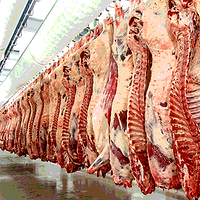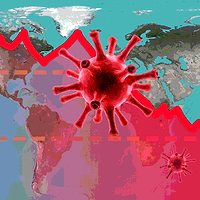An update on the latest developments in meat science, compliance and food safety by expert panelists in a roundtable format.
Food Safety Magazine: With several regulatory developments making news in the past several months, particularly draft directives and final rules concerning Listeria monocytogenes and E. coli O157:H7, it appears that microbiological issues will remain at the top of the industry's priority list. Do such regulatory developments accurately reflect the top issues of concern to the meat industry today in terms of food safety, scientific and operational strategies?
 Russell Cross: Our industry and the U.S. Agriculture Department (USDA) believe that all foodborne pathogens are of concern. I believe that many of the actions currently being taken by USDA are the result of their frustration that we have not "won the war" on E. coli, Salmonella and Listeria. The summer of 2002 gave us some of the largest recalls in our history. Neither USDA nor the industry wishes to repeat last summer. My perception is that USDA feels that that industry has not done all that they could to deal with these pathogens. I perceive that USDA expects our industry to be much more aggressive in: (1) developing and implementing pathogen interventions, and (2) using these interventions more effectively as CCPs in the Hazard Analysis Critical Control Point (HACCP) plans.
Russell Cross: Our industry and the U.S. Agriculture Department (USDA) believe that all foodborne pathogens are of concern. I believe that many of the actions currently being taken by USDA are the result of their frustration that we have not "won the war" on E. coli, Salmonella and Listeria. The summer of 2002 gave us some of the largest recalls in our history. Neither USDA nor the industry wishes to repeat last summer. My perception is that USDA feels that that industry has not done all that they could to deal with these pathogens. I perceive that USDA expects our industry to be much more aggressive in: (1) developing and implementing pathogen interventions, and (2) using these interventions more effectively as CCPs in the Hazard Analysis Critical Control Point (HACCP) plans.
Although that may be USDA's perception, it does not mean that it is necessarily true. If one takes a step back and evaluates how much we have accomplished since 1993, there is absolutely no question that we are producing safer food today than ever before. That does not mean that there is not much more to do.
Should we reevaluate our HACCP plans to determine whether E. coli O157:H7 and L. monocytogenes are hazards reasonably likely to occur? Given the advanced detection methods that are much more sensitive and that find many more positives, the answer is yes. Should we test for environmental Listeria spp.? Of course. Not to do so would be very dangerous. The real question and concern is how USDA will react to environmental positives that are not necessarily pathogenic. We should use these tests as indicators of a potential problem not as a performance standard? Using pathogens for validation and verification of process effectiveness is not scientifically sound.
Furthermore, the testing and lotting protocols being utilized for E. coli O157:H7 have become a "feel good" solution based on USDA's recalls in 2002. I would expect the rules will continue to change with each outbreak/illness and the decisions made during those investigations.
 Nick Nickelson: The primary issues of concern to the meat and poultry industries will depend on the source opinion. For example, most of the beef and pork products we produce are cooked, ready-to-eat (RTE) products for which Listeria monocytogenes is going to have an impact on production more so than E. coli O157:H7, which is of more concern to the raw beef product manufacturer, particularly on the slaughter side. We do use raw meat as an ingredient, however, and so we continue to track the issues of concern relative to E. coli.
Nick Nickelson: The primary issues of concern to the meat and poultry industries will depend on the source opinion. For example, most of the beef and pork products we produce are cooked, ready-to-eat (RTE) products for which Listeria monocytogenes is going to have an impact on production more so than E. coli O157:H7, which is of more concern to the raw beef product manufacturer, particularly on the slaughter side. We do use raw meat as an ingredient, however, and so we continue to track the issues of concern relative to E. coli.
In terms of the new USDA Listeria draft directive, which will become a new regulation, the industry needs to continue to communicate to the agency that the final rule should not create disincentives for testing. There needs to be some encouragement for finding the organism and working it out of the system. We know from past experience that once you start an environmental program, it takes some time to aggressively find the organism and implement preventive or corrective action to remove it from the system.
As we work on the issues that have become a routine part of meat and poultry operations--E. coli on the raw beef side and Listeria on the cooked RTE side--we have to deal with issues related to biosecurity, as well. There are a lot of food security guidelines available from governmental agencies and trade associations. The industry is using these to respond to biosecurity issues as rapidly as possible. However, if you look across all food processing plants, there are probably no two alike in the way they are set up for restricting access, establishing perimeters, using card readers and video cameras, etc. The tools are available, but the technology is changing so quickly that it is difficult to implement certain strategies or available tools today because it may result in constant upgrading later.
At Tyson, one program we've tried is an "operational risk management" approach to biosecurity, which was developed by the U.S. Air Force during Operation Desert Storm. The military had to buy a large amount of food locally and had to ensure that it was safe. In a way, this is like the development of a HACCP plan in which you determine whether the hazard (in this case biosecurity, not food safety) is reasonably or not reasonably likely to occur. Then you go through the same type of thought process: "What risk am I willing to take based on the cost?"
 Dell Allen: Basically, the recent USDA Food Safety and Inspection Service (FSIS) requirement for the reassessment of HACCP plans in the meat and poultry industry is probably a positive step, but one that is creating a lot of confusion in the way it is being implemented. I do think that HACCP reassessment will do one significant thing for both industry and FSIS: It will give boundaries such that we won't have these massive recalls as we have in the past. The requirement allows you to put some boundaries around when a particular positive occurs, and this will provide industry with some justification not to continue to expand recalls in areas of processing where it is not needed. In the past this has been difficult because operators didn't have the supporting data.
Dell Allen: Basically, the recent USDA Food Safety and Inspection Service (FSIS) requirement for the reassessment of HACCP plans in the meat and poultry industry is probably a positive step, but one that is creating a lot of confusion in the way it is being implemented. I do think that HACCP reassessment will do one significant thing for both industry and FSIS: It will give boundaries such that we won't have these massive recalls as we have in the past. The requirement allows you to put some boundaries around when a particular positive occurs, and this will provide industry with some justification not to continue to expand recalls in areas of processing where it is not needed. In the past this has been difficult because operators didn't have the supporting data.
The basic criticism I would have is the way it was written and the way it seemingly has been interpreted. Essentially, the old stamp of inspection used to be sufficient for our customers to rely on, to have asurance that what they are being supplied with is good product. However, the directive appears to tell our customers that the stamp of inspection really is not good enough, and that they've got to go inspect suppliers for themselves. This seems to undermine the agency's credibility to some extent.
The FSIS Listeria monocytogenes draft directive is still a work in progress. I think, again, it will do very similar things for the RTE business as the E. coli directive has done for the raw beef side, which is to place some constraints around potential recalls.
 Randy Huffman: With regard to food safety, AMI and AMIF have identified control of Listeria moncytogenes in RTE products and control of E. coli O157:H7 in fresh ground beef products as two of our top priorities. Recently, AMI came out with a Top 10 list of issues for the institute and at the top of that list is to conduct more research on finding solutions for controlling Listeria in RTE products and E. coli O157:H7 in fresh beef. These are two of the most important food safety issues with which the industry is dealing today.
Randy Huffman: With regard to food safety, AMI and AMIF have identified control of Listeria moncytogenes in RTE products and control of E. coli O157:H7 in fresh ground beef products as two of our top priorities. Recently, AMI came out with a Top 10 list of issues for the institute and at the top of that list is to conduct more research on finding solutions for controlling Listeria in RTE products and E. coli O157:H7 in fresh beef. These are two of the most important food safety issues with which the industry is dealing today.
Of the two recent regulations dealing with these pathogens, the draft risk assessment for Listeria is a step in the right direction in that FSIS is attempting to develop a science-based risk assessment to evaluate the effect of management strategies on controlling Listeria. However, as our comments to FSIS reflect, there are many information and data gaps that must be filled before any regulatory decisions or policies are completed. While it is forward-thinking to use science-based risk assessments to inform the development of regulatory policy, in this case, we feel FSIS needs to continue to fill those data gaps before issuing a final rule.
With regard to O157:H7, FSIS also conducted a risk assessment on this pathogen that was released in early 2002. Again, I think that one of the great things about risk assessment is that it helps you to identify data gaps and scientific research needs.
Reassessment of HACCP plans with regard to E. coli O157:H7 certainly is a step in the right direction, particularly to help define parameters associated with the control of the organism in raw beef products.
Food Safety Magazine: What kinds of advances or developments have occurred as a result of HACCP implementation? Where can the industry find assistance with HACCP reassessment?
Cross: Food safety awareness has increased as a result of HACCP implementation. Additionally, it has moved the industry into a more documentation driven system, which should improve accountability and effectiveness for the process. HACCP implementation has forced the industry to continue to seek technical expertise to maintain the HACCP systems and work toward continual improvement and change in the system as new issues arise.
The U.S. beef industry has implemented effective slaughter floor interventions such as steam, steam vacuum, organic acid sprays, hot water pasteurization and several other chemical interventions. Almost all of our focus has been on the slaughter floor (as it should have been). We have seen few interventions beyond the slaughter floor or pre-harvest. That is about to change. The January 2003 E. coli Summit, hosted by the National Cattlemen's Beef Association (NCBA) and attended by all segments of the beef industry was a major accomplishment. This meeting represented a key step in which the various segments pledged to research, test, and eventually implement interventions throughout the food chain. The beef industry has agreed that the load of pathogens on the hide of the animal must be reduced dramatically in order for the post-harvest interventions to be most effective.
In 1994, the industry formed the International HACCP Alliance, which includes more than 25 meat and poultry industry associations, 50 universities and governments from more than 12 countries. The Alliance has effectively standardized HACCP courses, accredited HACCP instructors, and offers "Train the Trainer" courses. A company can go to the Alliance to learn where/who is offering accredited HACCP training or they can go to many of the industry's associations for assistance (AMI, NMA, NFPA, SMA, FMI, NCC, NTF, NAMP, AAMP). Companies can also seek assistance from contract laboratories and HACCP consulting companies. One of the major accomplishments since 1993 is the manner in which the industry has worked together to provide this standardized training. It is unfortunate that we were never able to convince USDA to conduct much of this training jointly, so we could learn from the same page.
Nickelson: Certainly, HACCP as we knew it in 1993 and as stated by the National Advisory Committee on Microbiological Criteria for Foods (NACMCF), doesn't look the same today. Regulatory response to outbreaks and recalls has prompted such requirements as the addition of CCPs that aren't really CCPs. Even though HACCP may not look the same, I think it has done substantial good in moving us in the right direction toward food safety. Whether we agree with them or not, they've forced some positive changes in the way we do business. HACCP was intended to be a farm-to-fork approach, and in the beginning of its implementation, it wasn't. It was truly focused on the processing operation because that was the common denominator and the easiest place to focus such a system. One of the things that came out of the NCBA E. coli Summit is that you can see the farm-to-fork aspect really starting to become reality. Representative committees at the NCBA meeting included feedlots, producers, foodservice and retail, all taking some ownership in food safety.
The true food safety objective is to reduce the incidence of foodborne illness. There may be ways of meeting that objective without actually reducing the level of pathogens. It is industry's responsibility as food processors and handlers to reduce the level of pathogens to as low a level as possible. The consumer then has a responsibility, as well. We need to get back to the blocking and tackling. Industry is always responding to HACCP implementation or reevaluation, IDVs, CSOs, new directives, etc. As a result, we tend to focus on short-term issues. We must continually keep an eye on our long-term goals of educating our employees, our line workers, our quality assurance managers and top management about food safety. I think that the key is to empower our people on the processing lines and on the operational side of the business to be responsible for food safety.
Allen: As I mentioned, there's been a great deal of confusion about the HACCP reassessment, especially with smaller companies. I think it would help if the agency came out with a question-and-answer document to help better define what FSIS's expectations are and how the meat and poultry companies can best follow the guidelines. A great deal of the confusion is centered on the documentation required to show that that a company has reassessed its HACCP plan, and at the moment, the documentation that inspectors are asking for are all over the board. For example, some inspectors may want to see weekly data, some ask for the daily data, some want it on micro, and some want to see the company's records pertaining to validation procedures for steam pasteurization.
We initially started HACCP within our plants in 1991. At that early stage of HACCP implementation, there was a learning curve period of about two to three years when HACCP wasn't completely effective. For example, when we first started implementation, we had a significant number of CCPs, and it took some time to figure out that we didn't need that many and to pare it down to the true CCPs. After that learning period, though, HACCP really started to take shape, both for industry and for FSIS. I think that industry has moved much faster and further in their learning because they had to, because they were expected to operate during implementation of HACCP. And I think there is still a different take on it from FSIS's standpoint, because the agency looks at HACCP as a regulatory tool, whereas industry looks at it from both the regulatory compliance requirement and as a food safety management tool, which are not necessarily the same.
Huffman: One of the solutions we'd suggest is to encourage FSIS to conduct joint training with the industry on some of these very important food safety issues. I believe that some of the best scientists, best technology and best understanding of the system can be found at companies within the industry. Utilizing the knowledge and the expertise within meat and poultry companies to help share information and assist in the joint training of sectors of the industry should be a priority. There is a lot to be gained by having both the industry and operating facilities put in the technologies to produce safe food, as well as to participate with inspectors in training activities relative to the HACCP implementation and reassessment.
FSIS recently established a information knowledge exchange program (IKE) that provides examples of specific inspection scenarios that may be encountered during operations. These IKE scenarios provide information on how FSIS will interpret and react to various food safety issues. The IKE system is a useful enhancement to improving the consistency of HACCP implementation.
Food Safety Magazine: What are some of the most significant technological advances that have been made in the meat industry in terms of our ability to prevent and/or control microbiological, chemical or physical hazards?
Cross: We have not seen all of them yet, but one of the most significant technological advances is the speed, precision and accuracy of the pathogen tests available for us to use. That is why we are finding much more E. coli O157:H7 than ever before. The same applies for Listeria and Salmonella. There is no question, that we should be in a mode of trying to find the pathogen if it is there. As the tests improve, we should use them.
We have not seen dramatic changes in technology in regard to physical and chemical hazards since most HACCP plans find these items "not reasonably likely to occur" and are handled by other means.
We can also count hot water and steam pasteurization as significant, and as well as organic acid rinses. As one looks in the pipeline, we can get excited. There are many technologies that are in the final research stages that should give us some key tools in our war. One could also say that one of the advances is the manner in which we are using data to make key decisions. We have a long way to go, but we have at least, started down that path. I expect a completely different answer to this question one or two years from now. A great deal is in the pipeline.
Nickelson: The most significant technologies to impact the food industry as a whole are those that have spurred faster, better communication. This includes cell phones and computers with better storage and data management capabilities, the latter of which has enabled us to analyze trends much faster than the past.
We also have technologies available today that enable us to isolate and identify organisms faster and at a more sensitive level than ever. We have good intervention technologies on the slaughter side that have greatly enhanced food safety efforts. The proven interventions are the organic acid rinses, the hot water washes and steam pasteurization technologies. These only work if they are being utilized as intended, 100% of the time. I believe the next step is to better control and manage the bioburden that's coming in on the hide, taking care not to overload the intervention system. This will help us achieve one of our food safety objectives. There is good research going on with interventions on the post-processing side, but there are very few that are commercially feasible.
Allen: Although this may not be considered a scientific or technological breakthrough, the most significant advance we've seen in the last year has been the increased willingness of the pre-harvest sector producer to decide to get involved in the whole process of food safety. We haven't had the true farm-to-fork type of approach touted early on. Their willingness to become engaged will have a dramatic impact on our ability to better measure the total process, including what's coming in the door from the producers. For example, we know from USDA studies that the hide is the predominant source of E. coli O157:H7 coming in the door. I think we're going to start seeing a lot more measurement of pathogens up front, which is a vital part of the process. In other words, if we don't know what the bioburden is as materials come through the front door, how can we manage it on the back side?
Huffman: We've seen a lot of advances in some promising potential intervention tools that can be used at the pre-harvest level and we're seeing adoption of some of these technologies in large field trials. One in particular is the direct-fed microbials, which are strains of Lactobacillus incorporated into cattle feed. This has been shown in some feedlot trials to have a significant impact on reducing the number of cattle shedding E. coli O157:H7. I understand that there are now more than 800,000 head being fed this ingredient, which illustrates a significant implementation of that technology in the field today. The jury is still out on its effectiveness in a real-world setting, but there is certainly a lot of activity in this area.
On the post-harvest side in beef operations, specifically the slaughter floor, there are proven intervention technologies in place, such as thermal treatments and organic acids. This techniques have been used effectively for many years. In terms of technologies used to control Listeria in RTE meat operations, one of the most significant is the wide adoption of reformulation of cured meat products with lactate and diacetate at sufficient levels to retard the growth of Listeria through the shelf life of the product. We've seen broad implementation of this technology in the industry, with a very high percentage of cured meat products now being reformulated with those ingredients. There are several other such ingredients that are being tested for use in this manner.
Food Safety Magazine: What challenges are on the horizon for the industry in the near future and how can the meat and poultry industries prepare for these challenges?
Cross: The industry is under a microscope. Any additional outbreaks/illnesses will create challenges. It is critical that the industry continue to work together to prevent food safety issues that are traced back to the meat and poultry industries. The path is clear that when an illness occurs, the entire category suffers, not just the brand name. The challenges are numerous. For example:
• We have to get testing under control. We are spending millions upon millions on the wrong kind of regulatory or customer driven testing. This "political, feel good" testing is not making meat and poultry safer. Think of where we would be if we had devoted those resources to the development of effective food safety programs? We have the collective scientific knowledge to accomplish this standardization if we can find the correct forum.
• We must be able to work together as an industry to reach consensus on key food safety issues.
• USDA should perhaps use their National Advisory Committee for Microbiological Criteria in Foods (NACMCF) to work with the scientific community to develop recommended guidelines for the optimal methods for testing to validate interventions, validate HACCP plans and baseline predictive microbial mapping.
• There is a strong need to develop optimal methods for sampling carcasses, primals, trim, finished product, and the environment. There is absolutely no reason why we should have the tremendous variability that we have in our testing and sampling programs. The meat and poultry industry can develop their own standard methods, but unless we have a regulatory sponsor and publish a "standard methods" text, it will never be accepted as the standard. The International HACCP Alliance and NACMCF would be helpful to FSIS in this regard. FSIS needs to step up and lead on this issue. It is long overdue.
In addition, our industry should shift from a crisis management mode to a crisis prevention mode. This will involve a "cultural" mindset from the CEO down. For example:
• Each company should develop it's own strategic plan for food safety. You must have a road map that is based on prevention.
• Each company should have a person identified as their lead food safety person. This person should be empowered by top management to implement the plan.
• Each company's food safety program must go from farm to market. Each company should be aware of what his/her suppliers are doing in regard to food safety.
• Each company should conduct baseline product and environmental testing and mapping in their plants. This data will serve as your early warning of potential problems. We cannot wait until that problem shows up in the finished product with regulatory testing.
• Each company should have an effective crisis team and plan.
• Each company should have an effective training plan for all employees.
As we look to the future, we need to get on the offensive! We should be implementing programs that are much more advanced than that required by USDA. We must get out of the mode of just reacting to the regulators. We must be ahead of what the government requires. Until we get in that mode, we can expect that USDA will continue to implement policies that force us to deal with the pathogens, often in a manner not driven by science. In order for us to take these bold steps, USDA also must help. The speed that USDA approves pilot testing of new interventions is unacceptable. USDA must streamline this process, especially if the product being tested is already on the Generally Recognized As Safe (GRAS) list.
Bottom-line, the meat and poultry industry has accomplished a great deal since 1993. There is much more to do. We must be on the offensive.
Nickelson: One of the goals for the future is that as new products are developed to meet consumer needs, food safety should be built into the initial process. In food manufacture, we sometimes change ingredients, packaging, processes and storage parameters. All of these types of changes may have some impact on potential food safety risk that could be more effectively addressed during the initial planning and development of the product.
Outside of regulatory-driven issues, the meat and poultry industry must reestablish consumer confidence, if, in fact, we've lost it. We still have the safest food supply in the world, but we need to do a better job of affirming consumer confidence because there has been very little positive media about the industry. In addition, we need to continually do a better job with our customers who are between us and the consumer. It's never too late to educate a consumer! Consumers are more aware of foodborne illness causing pathogens than they were 10 years ago. However, I am not sure consumers understand what they are, where they come from or how to control them. Several of the big food companies have 800 numbers on their product labels in the retail store. If the consumer has a problem with the product, they can call in and get assistance from the company. Many such calls are questions about proper preparation. This says something about how well the consumer is educated about preparation and food handling. Food safety education will never be complete. It has to be continuous and at every level in the food manufacturing, handling and distribution chain.
Allen: Another issue I think is bubbling to the surface is the use of antibiotics in feed. Sooner or later, we're going to face up to the fact that we're no longer going to be able to use antibiotics in feed. The challenge will be to figure out how to maintain animal health with alternative methods.
Surveys tell us that cold-chain management of our product throughout its production and distribution is another area that must be looked at very closely. There is no doubt that some of the cold-chain management in distribution and point-of-sale locations in the system are weak and need to be improved.
Huffman: Employees are the most important resource that we have, and so education remains a top priority. We will need to continue to do a good job of educating our workforce and identifying opportunities for improvement.
We have seen a significant advance in the willingness of the production sector to participate and to try to understand their role in controlling pathogens at the farm level and on the livestock arriving at the slaughter floor. With better monitoring and improved understanding of the pathogens levels on the animals coming into the plant, the industry will begin to find new or improved ways to reduce the bioburden of pathogenic microorganisms.
Collectively, industry, government and the research community must effectively develop and communicate research needs and priorities. Research funding in the basic and applied sciences will be key to the discovery of food safety solutions.
Dell M. Allen, Ph.D., is a native of Kansas who is Vice President of Technical Services Cargill Meat Solutions Excel Corporation of Wichita, KS. Dell spent 22 years at Kansas State University as professor of Animal Science where he taught a variety of courses in the area of meat science and animal/carcass evaluation and for 13 years coached the KSU Meats Judging Team. During his time at KSU, he took a year-long leave-of-absence and worked for the Chicago Mercantile Exchange in market surveillance and compliance and has consulted with several of the major meat companies in the U.S., as well as in Canada and Brazil. Dell is active in the American Meat Science Association, having served both as a board member and as president. He has served on multiple committees for the American Meat Institute, including being chairman of the Meat Inspection Committee. In 1997, Dell was appointed to the National Advisory Committee on Meat and Poultry Inspection by Secretary of Agriculture, Dan Glickman.
H. Russell Cross, Ph.D., is Vice President of DuPont Food Industry Solutions, whose charter is to promote DuPont's science-based knowledge and experience through solutions to the food industry, primarily in food safety and productivity. Cross is former administrator of the USDA Food Safety and Inspection Service from 1992 to 1994 during the Bush and Clinton Administrations, where he was responsible for all domestic and imported food safety programs in the U.S. His extensive industry experience also includes positions as director of IDEXX Food Safety Net, Inc., and as director of the Institute of Food Science and Engineering and head of the Department of Animal Science at Texas A&M University. As a recognized leader in the industry, Cross has received more than a dozen awards for his work in animal and food science and research, including a National Meat Association Forbes Award in 1996, the Industry Advancement Award from the American Meat Institute in 1998, and the American Meat Science Association R.C. Pollock Award in 1999. Cross also founded the International HACCP Alliance, for which he served as executive director from 1994-1997.
Bullish on Progress: A Meat Industry Roundtable




